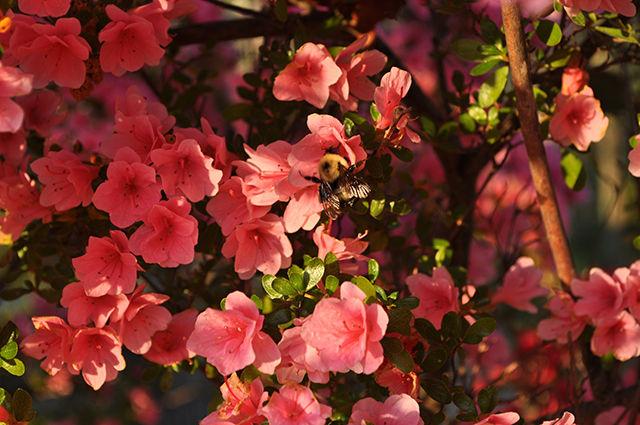For years, the disappearance of large populations of honey bees has perplexed and concerned researchers around the globe. After all, many plants in the ecosystem rely on a pollinating insect to carry pollen between plants for fertilization to occur.
However, a team of researchers at NC State believes it has identified a question that has yet to be asked in order to get a complete picture of the situation: “How have changing conditions affected native bees?”
There are about 500 bee species native to North Carolina, and it is unknown if the impact felt on the honey bee around the United States has had a similar decimating effect on other bee species’ populations.
Elsa Youngsteadt, an entomologist research associate at NC State, hopes that learning more about bee species native to North Carolina will help people recognize the importance that these creatures play in our lives.
“Recently there has been a lot of public interest in native bees,” Youngsteadt said. “Unfortunately, there’s more interest than researched information.”
That’s an issue researchers are working to correct. In the meantime, they’ve come up with some solutions to help North Carolina’s native bee species.
The research team has come up with a program to train master gardeners in the Raleigh area to be more conscious of which flowers they keep in their gardens throughout the year. Youngsteadt explained that many domesticated flowers do not have the nectar and pollen required to support bees.
“These flowers are usually bred because of their pretty color and shape, but they often don’t produce anything that the bees can use,” Youngsteadt said.
Members from the research team created a community outreach program to inform the public about the steps they can take to improve the conditions for pollinating species in the area.
Also in the works is a conference aimed at teaching growers and insect researchers about the need to protect pollinators. The two-day conference is scheduled to roll out in October and will be spreading the latest in native bee research to the people who can make a change in the community.
“We want to get everybody together on the same page,” Youngsteadt said. “We’re spreading the most recent information on protecting bee populations.”
Youngsteadt said she recommends planting a variety of native flowers throughout a garden to maximize the effectiveness of pollination for different species of bees.
Researchers are also studying the effect that climate conditions have on bee species in the Raleigh area. April Hamblin, a graduate student studying entomology, is conducting research about how bee species are affected within cities. Conditions such as decreased flora and increased temperatures change the dynamic of all insects living in a city.
It will be a few years before any definitive claims can be made on how much native bee populations have been affected by human activities, but in the meantime, the information that is spread to gardeners and other research teams could prove crucial in stabilizing native bee populations.








